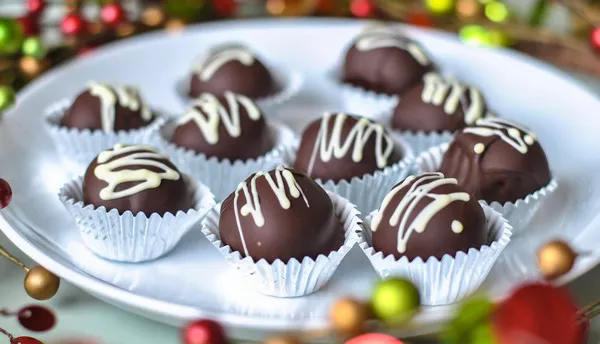In the quest for a mid-afternoon energy boost, coffee, tea, energy drinks, and sodas often take center stage. Surprisingly, a square of dark chocolate or a comforting cup of hot chocolate might not be the last thing on your mind for a quick pick-me-up – a fact often overlooked due to widespread unawareness about chocolate’s caffeine content.
The Chemistry Behind Chocolate
Despite its reputation as a sweet indulgence, chocolate, in its pure form originating from cacao trees, is a fascinating concoction of hundreds of chemicals. These compounds not only contribute to chocolate’s delectable taste but also harbor benefits such as antioxidant properties and anti-inflammatory effects.
Cacao beans, the starting point of chocolate, contain caffeine, theobromine, and theophylline – natural stimulants acting as insecticides for cacao trees. Once transformed into cocoa liquid and eventually chocolate, these stimulants block adenosine receptors in the human brain, thwarting drowsiness and promoting alertness.
Deciphering Caffeine Levels in Chocolate
The caffeine content in chocolate corresponds directly to the amount of cocoa solids present. Unsweetened chocolate, boasting 100 percent cocoa solids, harbors the most caffeine. Dark chocolate, rich in cocoa solids, surpasses milk chocolate in caffeine content, while white chocolate, devoid of cocoa solids, contains none.
According to USDA data, the caffeine content in chocolate can range from a few milligrams to 20-30 mg per serving. For instance:
1 oz. serving of dark chocolate (60-69% cacao solids) – 24.4 mg caffeine
1 oz. serving of semisweet chocolate (45-59% cacao solids) – 12.2 mg caffeine
1 oz. serving of milk chocolate – 5.6 mg caffeine
1 cup of chocolate milk – 2.5 mg caffeine
However, brand variations are significant, with Hershey’s milk chocolate, for example, containing 9 mg of caffeine in a 1.5 oz. serving.
Chocolate vs. Other Caffeine Sources
Comparatively, the caffeine content in chocolate is akin to other sources:
Cup of brewed coffee – 92 mg caffeine
8 oz. energy drink – 75 mg caffeine
1 oz. espresso shot – 63 mg caffeine
Cup of black tea – 47 mg caffeine
12 oz. cola – 33 mg caffeine
Cup of brewed green tea – 29 mg caffeine
Eating a square of dark chocolate is nearly equivalent to consuming a cup of green tea.
Unveiling Hidden Caffeine
While chocolate often serves as a negligible caffeine source in most commercial products, the FDA’s caffeine labeling requirements only apply to added caffeine, not the naturally occurring caffeine in cocoa beans. Factors such as chocolate type and the quality of cacao beans also influence caffeine levels.
A global study revealed variations in caffeine levels, with beans from Ecuador, Venezuela, and Peru containing the highest, while those from Ghana, Ivory Coast, and Mexico showed the lowest caffeine levels.
Hot Chocolate’s Caffeine Quandary
Commonly asked – does hot chocolate contain caffeine? Yes, it does, with a tablespoon of 100 percent unsweetened cocoa powder containing 12.4 mg. Popular hot chocolate brands might use chocolate syrup with 3-4 mg of caffeine per tablespoon.
Chocolate and Bedtime
Healthcare experts advise steering clear of caffeine-containing products before bedtime. Although a cup of chocolate milk with 3 mg of caffeine won’t likely affect sleep, consuming an entire dark chocolate bar with 96 mg of caffeine could lead to sleep disruptions.
The combination of caffeine and theobromine in chocolate increases heart rate and blood pressure, impacting neurotransmitters and stress hormones. Additionally, sugar in chocolate may cause blood sugar spikes, complicating sleep.
In the delicate balance between savoring chocolate’s delights and ensuring a restful night, moderation is key. Understanding the nuances of caffeine in chocolate allows consumers to make informed choices, enjoying the treat without compromising their well-deserved sleep.

